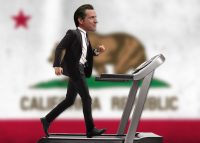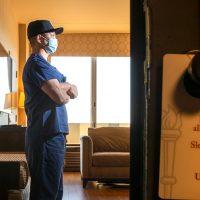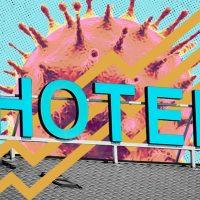U.S. hotels last week continued their slow recovery from the depths of the coronavirus pandemic.
National occupancy crept up to 36.4 percent from 35.3 percent the week prior, according to the latest figures from hotel data firm STR. That continued the pattern of 1- or 2-point weekly gains over the past two months.
For the first time, occupancy for hotels at the lower end of the market topped 50 percent. All hotel classes are “comfortably above 20 percent” occupancy, according to STR’s senior VP of lodging insights, Jan Freitag, using a standard that would have been unthinkable before Covid.
Read more



Freitag added that there wasn’t “significant week-to-week change” in cities “that were the focus of protests and unrest,” suggesting that the events had no discernible effect on demand.
Occupancy was a full percentage point lower across the top 25 markets in the country than the national average, but average daily room rate was slightly higher.
Just seven of the top 25 markets in the country saw occupancy over 40 percent, including Norfolk/Virginia Beach, New York City, Phoenix and Philadelphia.
New York City, which was gripped by protests in the last two weeks, saw occupancy fall to 47.1 percent from 47.6 percent in the last week of May. Revenue per available room, a key metric for performance, also fell from $59.41 to $57.77.
Two weeks ago, Los Angeles appeared on its way to occupancy above 40 percent, but occupancy fell this week to 38.8 percent. RevPAR declined about 40 cents to $42.01.
Occupancy in Miami fell from 32.8 percent to 29.6 percent last week, but RevPAR increased about 50 cents to $28.03, the highest since the third week of March.
Chicago posted improvements in both occupancy and RevPAR. Occupancy rose two percentage points to 31.1 percent, the first time that more than 30 percent of rooms were filled in 12 weeks. RevPAR increased from $21.26 to $23.61.
Hotels in the Windy City’s central business district are struggling much more, though. Occupancy has hovered between 16 percent and 17 percent since the second week of May. RevPAR rose less than a dollar to $17.69.
